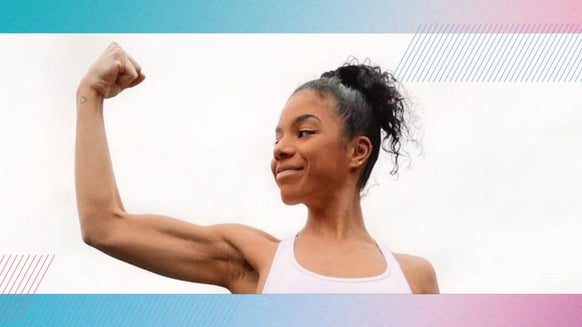
The terms pull up and chin up seem to be used interchangeably in a lot of gyms, however they are slightly different movements, targeting different muscle groups, and arguably have different purposes.
I'm going to explore what the differences are, and why you might want to include a different style in your training program.
The Pull Up
A pull up is the movement required to pull yourself from a dead hang up to the bar.
Typically you're just aiming for your chin to go above the bar, but sometimes you might need to pull higher and get your chest to the bar (chest to bar pull ups).
A classic pull up involves an overhand grip, where your palm faces away from you, with your hands just outside of your shoulders.
This recruits primarily the back muscles (lats, traps, infraspinatus, erector spinae) but also the pecs, biceps and obliques.
When to Train Pull Ups
If you're a free runner or climber, then an overhand grip is more transferable to your sport than an underhand grip (how many walls do you know of that have a handy bar to pull yourself up with?!).
If you work in an office all day, or have poor posture from over-developed pecs and biceps, it might be better for you to use pull ups, where the grip will place more emphasis on your back.
If you lack flexibility in your chest and forearms to supinate your grip (so your palms are facing towards you, then pull ups may be the best option.
Pair them with chest exercises as an antagonist superset, or lat pull downs as an agonist superset.
Add them as a finisher to your back day routine for that real V shaped back!
The Chin Up
A chin up is essentially the same movement as a pull up, only with your palms facing towards you. This underhand grip usually means your hands are shoulder width or narrower.
The chin up recruits all of the same muscles as the pull up, but the pecs and biceps are more activated in the chin up, and the traps are more active in the pull up.
So why would you want to train chin ups as opposed to pull ups? Or vice versa? The answer depends entirely on your goals or sport, current strengths/weaknesses and personal satisfaction.
When to Train Chin Ups
If you're new to pull ups and want to build the strength to do overhand
If you get bored easily and want to mix up your training then you could add in chin ups to your back routine for variety. Likewise you could add in wide grips, narrow grips, single arm pull ups, archers pull ups, towel pull ups, etc.
Pair them with a bicep isolation exercise in a pre- or post-exhaust set, or in supersets or tri-sets.
Add them as a finisher when your back tires from pull ups.
Take Home Message
When it comes to pull ups versus chin ups, no one exercise is really superior - both require strength and good technique to be done properly, and both activate the same muscles, just at different intensities.
The overall decision about which grip to take depends on what will benefit you the most and what is most relevant to your training and goals.
Georgina Ellis | Functional Fitness, Running & Yoga
www.fitcetera.co.uk







